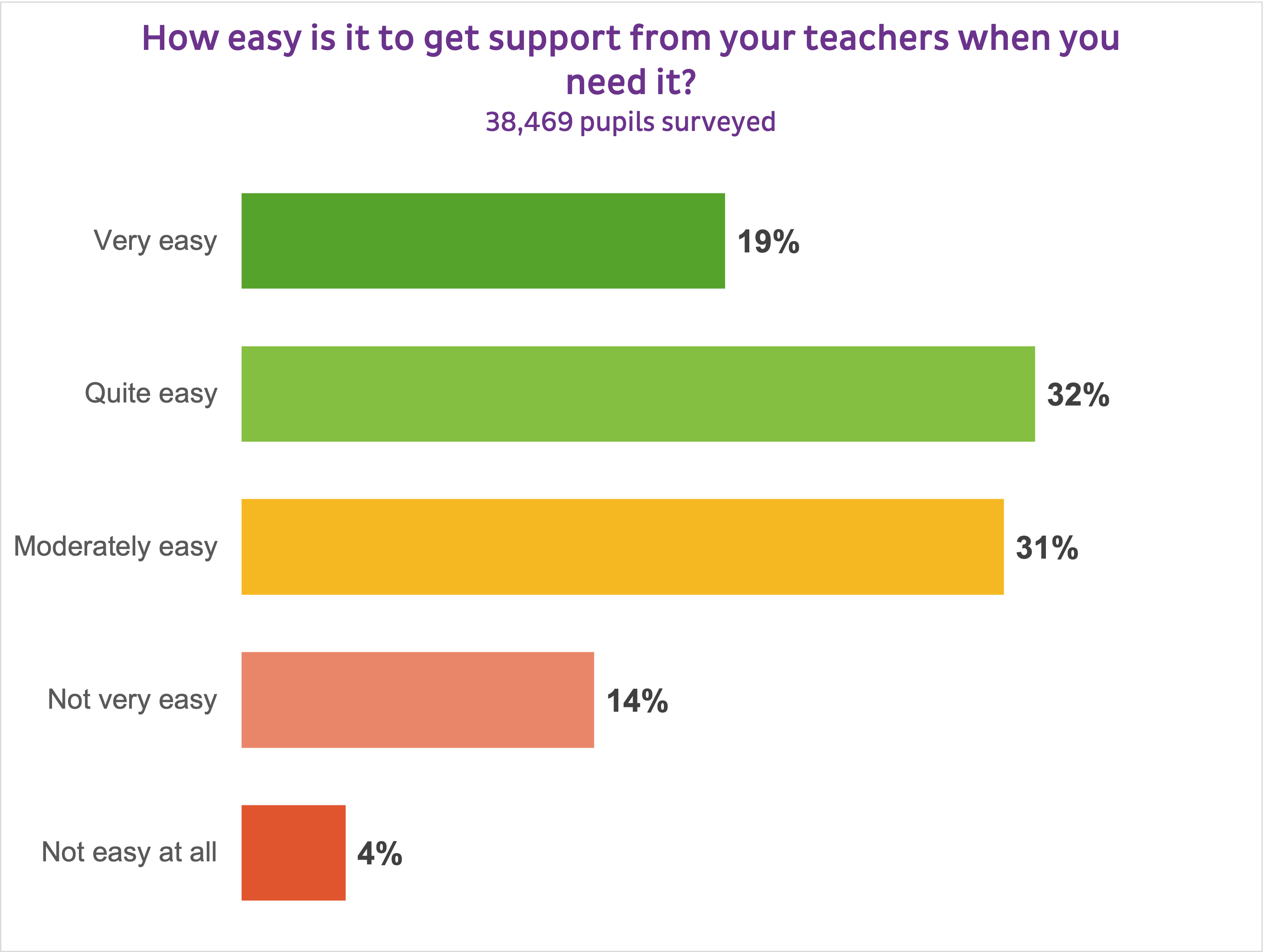10 February, 2022
Strong multi academy trusts
As more schools become academies, the government is making more and more references to “strong trusts”.
5 Components of a Strong Trust
As more schools become academies and academy trusts consolidate, both the government and the public are making more and more references to “strong trusts”. The definition of a strong trust, however, has been very loose. Our partners at the Confederation of School Trusts have proposed that strong trusts’ qualities can be described with the following 5 components: expert governance, quality of education, workforce resilience and wellbeing, efficiency and effectiveness, and public benefit and civic duty.
When thinking about how to improve each of these components, we propose that trusts can greatly benefit from stakeholder feedback. By choosing an evidence-based approach to school improvement, you can implement the changes needed based on your community’s experiences. In this post, we reflect on how previous findings from our surveys’ analysis can help identify areas of improvement in your trust.
Expert Governance
Trustees have an extraordinary opportunity to oversee the strategic direction of their trusts’ schools and hold executive leaders to account for the quality of pupils’ education. Combined with the ability to support and intervene, achieving an expertly crafted and clear governance structure is a prerequisite for a strong trust.
Edurio’s exploration of the clarity of the governance model — not only at the highest level but throughout the organisational structure of the trust — suggests that clear allocation of responsibilities might be an area of concern. Only under half (44%) of staff members surveyed in our Staff Experience and Wellbeing survey responded “very clear” or “quite clear” to the question, “How clear to you is the division of responsibilities between your school and the trust?”
Quality of Education
The purpose of academy trusts is to advance education for the public good, so the quality of education is arguably the most important component for an academy trust. High quality of education requires strong evidence-driven models of school improvement, professional development to improve the capacity of their teaching staff, and the ability to reach all children with the school improvement activities.
We believe it is essential to focus on how the pupils perceive the quality of education, to get a full picture of the trust experience. When asked, “How easy is it to get support from your teachers when you need it?” 51% of pupils gave positive responses, with the proportion varying school-by-school and trust-by-trust.
Workforce Resilience and Wellbeing
More and more trusts seek to become the employer of choice in their area, and for a good reason. Highly successful recruitment, development and retention of great teachers and leaders is another area that differentiates a strong trust from an average one.
While our research has previously provided insight into the drivers of staff retention in schools, our work with trusts before and during the COVID-19 pandemic has also emphasised the role of trusts and schools in ensuring solid support for mental health and wellbeing. The overall situation is positive, but 18% of staff members answered “difficult” or “very difficult” to the question “How easy or difficult is it to get support with your mental and emotional wellbeing?”
Efficiency and Effectiveness
Efficient use of public money and effectiveness in providing educational outcomes are vital for a strong trust. Both require supporting schools in their operations and setting up a strong central team that can liberate the time of teachers and leaders to focus on education.
In our “Trusting in Trusts” report, we dig deeper into how school staff perceive trust effectiveness, but it is also insightful to see how staff perceptions compare with parent perceptions. The graph below shows that 42% of staff members have high confidence in trust adding value to their work and a similar 45% of parents and carers share the same about trust being beneficial to pupils.
Public Benefit and Civic Duty
Trusts have a duty beyond ensuring their children achieve high exam results. They need to provide broader intellectual, social, and cultural development of the pupils, mentor and support other trusts, and contribute to the broader common good.
Edurio’s Effective Governance survey of school leaders and members of local governing bodies suggests that over two thirds (67%) of respondents think that their understanding of “the needs of the school community, more broadly” is quite clear or very clear.
Stakeholder Feedback and a Strong Trust
All five of the domains of a strong trust affirm that multi-academy trusts are complex systems where all of their stakeholders play their part to achieve greatness. The strengths and weaknesses of a trust will be visible at all levels, from the trustees and the central team, to the school leaders and staff, to LGB members, parents, and pupils.
We have seen this in our work with over 200 trusts so far — strong trusts not only agree on the components that they are proud of, but also actively gather evidence on how well they’re doing on each. As Darran Ellison-Lee, the Director of Primary Education at United Learning, puts it, “in terms of school improvement, having as clear and as detailed a picture of what your current reality is, is critical”. To find out more about the impact of Edurio check out our case study with United Learning.
Every year we work with trusts who measure their staff resilience, their clarity of governance, and their education processes by including all stakeholder groups in strategic and systematic stakeholder surveys. To embark on your stakeholder feedback journey, feel free to explore our research or our school improvement handbook or reach out to us via hello@edurio.com




